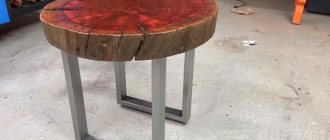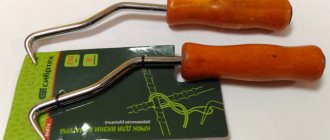The main task of a wood chipper is to chop wood into chips, with a certain shape and size, so that this material is suitable for a particular application.
Therefore, the requirements for wood chips, and therefore for wood chippers, which are often called shredders or machines for chopping wood, depend on the subsequent use of this material.
In this article (GK) we talked about all the possible ways to use wood chips, as well as the requirements for chopped wood. And in the article (Chip crushers) we talked about the relationship between the type of chopper and the characteristics of the chips.
Why are homemade shredders made?
The main reason for making homemade wood chippers is that the machines available in stores are too expensive
In addition, in addition to the cost of the shredder itself, the buyer often has to spend money on its delivery , which also increases the final price.
Therefore, making a homemade machine is justified only if the total costs turn out to be noticeably lower than when purchasing in a store or directly from the manufacturer.
Selection of equipment for manufacturing
The most suitable equipment for obtaining wood chips of the required shape and size is a special woodworking shredder. However, the cost of the machine is so high that outside of production it is necessary to look for other options.
It is quite possible to make wood concrete at home. To do this, you need to make wood chips yourself. A wood chipper becomes a wood chipper in a farm setting. There are three types of wood chippers.
Disc chippers process wood of various shapes. By adjusting the inclination of the cutting tool, you can obtain workpieces of the required size.
All of the devices listed provide only manual loading of material.
What type of homemade shredder to choose, and how to make it?
On the Internet you can find and get free drawings with dimensions and descriptions of various homemade wood chip cutters, but most of them are theoretical fabrications .
There is nothing wrong with this, but the best criterion of truth is practice, so you need to look at the actual operation of such products and read reviews about the operation of these devices presented on various forums.
Many wood chippers are effectively used for shredding paper, rubber and other materials, because the principle of operation is completely unchanged - the device chops or cuts the material, turning it into small particles.
Therefore, we have prepared links to topics related to the manufacture and use of homemade shredders of various types:
- Forumhouse;
- Forest Industry Forums;
- Artisan;
- Metal forum.
Rotary hammer
The most versatile and easiest to manufacture is the rotary hammer grinder.
This type of machine shreds any wood waste that appears either as a result of machine processing of industrial wood, or after pruning the garden.
conditions must be met :
- the size of the crushed material must be smaller than the size of the receiving window;
- there should be no large clods of earth, cement or metal fragments on the wood;
- To obtain clean chips, it is necessary to use debarked wood.
Drum
Making a drum chopper is difficult because it is quite difficult to find a drum of the right size.
If you take a cutter from a jointer, it will only produce very fine chips.
This is due to the fact that the jointer cutter is initially designed for a very high rotation speed, due to which its inertia is sufficient to cut knots or twisted fibers.
To increase the size of waste, it is necessary to reduce the rotation speed hundreds of times , which means increasing the torque applied to the cutter by the same amount. As a result, the inertia of the cutter will not participate in chopping the wood, which means that an even greater increase in torque will be required.
When the cutter rotates at such a speed, the knives will not cut, but crush the wood, which will require enormous power.
The application of such a force cannot be transmitted using belts, and the gear drive will experience enormous loads .
Indeed, in addition to the teeth of the gears, the joints of the shafts and gears are also subject to loads. If they are made by milling (monolithic), then they will turn out to be huge, but if you use splined and, especially, keyed fixation, then there is a high probability that the gears will turn on the shaft. Especially if you have to chop thick wood.
In addition, the jointing drum (mill) is designed for action along the fibers , where there is much less resistance to the movement of the knife, and in a wood chipper the main mode will be action across the grain with enormous resistance to the wood.
Therefore, a jointer requires a cutter diameter that is 3–5 times smaller than for a grinding machine . It is also necessary to increase the distance between the knives, which will allow thicker chips to be made.
Another significant disadvantage of a jointing drum rotating at high speed is that even with vertical feeding, when the wood falls under its own weight, the thickness of the chips does not exceed a fraction of a mm .
At a shaft rotation speed of 3000 rpm, the knives pass through chopped branches and other waste 200 times per second, that is, the interval between knife impacts is 0.005 s.
How far will the branch have time to travel, given that each blow of the knife pushes it upward a little? Therefore, for drum chippers, the optimal shaft rotation speed is 100–300 rpm , with 2–3 knives installed on the shaft.
That is, even at maximum speed and the number of knives, a maximum of 15 blows will pass per second, and with minimum settings 3-4 blows per minute.
Disk
This chopper consists of several saw blades mounted on a common shaft and separated by washers. In this case, the width of the chips is equal to the distance between the disks . In theory, everything is simple, but there is not a single video on the Internet showing the operation of such a wood chipper.
On some forums, users talked about their experiences with such a device, and all the reviews were negative.
According to them, such a chipper has very little productivity , and the inter-disk space quickly becomes clogged, which is why it has to be cleaned several times a day.
Shredder
This type of wood chipper is designed for coarse chopping of wood that contains nails and other small metal fragments. In industrial single-shaft devices, it is based on a cast drum of large diameter, on which knives are secured by soldering or bolts.
In twin-shaft shredders, instead of a cast drum, a hexagonal shaft is made, onto which gear attachments are put.
Moreover, the width of the nozzles and the space between them is selected so that the free space on one shaft exceeds the width of the nozzle of the other shaft by a fraction of a mm.
Thanks to such precision manufacturing, both shafts operate on the principle of scissors and effectively cut crushed chips.
to make such shafts yourself , and custom-made ones with such precision, and even from hard steel alloys, will cost more than a purchased shaft assembly for a chip cutter.
Indeed, in industrial production, knives and the spacers separating them are made by stamping, but in manual production, at best, they will have to be milled from a sheet.
If the master does not undertake such work, then he will first have to make matrices for casting, then cast from tool steel and forge, and then mill to bring it to the desired shape. Moreover, each part will have to be made separately, which is why the total cost of such a shaft will be hundreds of thousands of rubles .
Some forums post videos of homemade shredders made from powerful gears or equipped with two matched shafts made from steel angles and homemade knives (sharpened springs).
How much such knives made from car springs will cost you will depend on the conditions under which you get them.
Such devices even chop quite thick branches, but the output is not wood chips, but stumps , the thickness of which is equal to the thickness of the branch, and the length is 5–10 cm.
Such chopped wood can only be used as fuel chips, provided that the boiler feed auger is designed to work with such material.
Basic parts for installing a homemade crusher
DIY branch chopper. This is a great way to acquire useful equipment for your garden plot, without extra costs. To install the unit, you must have professional skills and experience in plumbing.
The operating principle of a homemade wood chipper is similar to a regular household meat grinder: it is chopping wood into chips. The machine crushes the wood, and the output is chips. For the design, it is necessary to select a suitable motor and blades, housing elements and connecting parts.
Engine selection
A do-it-yourself chip crusher is mounted taking into account the type of operation of the device and its power. The grinding process can be carried out by either a gasoline or electric motor. Each of them has its own advantages.
The electric motor limits the operation of the crushing device to the access area to the power source. It does not produce exhaust, which allows the mechanism to be used in enclosed spaces. A gasoline engine does not depend on the electrical network and has higher efficiency and, more often, power.
When choosing an engine, it is necessary to take into account the power parameters:
- Motors with a power of 3 - 4 kW. will cope with chopping branches with an average diameter of up to 4 centimeters.
- Units with a power of 6 kW. Suitable for chopping large branches up to 15 centimeters in diameter.
Industrial wood chippers, depending on the model, are equipped with a milling system, a disk or disk-milling knife.
When a wood waste crusher is assembled with your own hands, simpler cutting elements are used:
- Set of circular saws.
- Knife - disk design or two-roll system equipped with 8 knives.
The most popular shredding system is circular saws.
Crushing system
When choosing circular saws, you should give preference to products with carbide tips; in this case, you can avoid frequent sharpening of the blades.
Chopper body
A do-it-yourself wood chipper is mounted on the basis of a welded frame structure made of steel pipes, inside of which the engine will be installed. In order to ensure the mobility of the unit, it is recommended to equip it with wheels. Sheet metal or galvanized steel can be used to make the casing.
A homemade branch chopper made by yourself may not have a presentable appearance, like an industrial unit, but the list of its advantages includes such important advantages as:
- Low cost.
- Ease of operation.
- Efficiency at work.
Recommended reading:
Recycling of construction waste
Industrial waste management system
Where can I get parts and materials?
Since one of the reasons for making your own shredder is the desire to save money, it is very important to reduce costs on parts and materials.
Ferrous and non-ferrous scrap collection points, as well as various enterprises that have old equipment on their balance sheets, can help with this. Woodworking businesses and workshops can also help, especially those that have recently upgraded their equipment.
To make the frame of a rotary hammer machine, you can use a steel angle or channel , and not necessarily a new one, the main thing is that the metal is not damaged by rust.
The machine body, also known as the protective casing around the rotary hammer mechanism, as well as the protective casing around the belt or chain drive, can be made from sheet metal with a thickness of 0.8–2.5 mm.
The same metal is suitable for making the receiving casing. This metal can be cut from the body of some cars, as well as from various fences and decks.
The electric motor can be removed from an old machine or various electrical equipment . He may need to replace the bearings, but this will cost less than buying a new electric motor of the required power.
There you can also select pulleys of the required size, as well as the electrical equipment necessary to start and operate the engine.
To make the rotor, you can use either sheet steel or a flywheel from a car engine . However, in this case it will be necessary to insert and weld the hammer chopper shaft into it.
A spring from a passenger car is well suited for making knives. An experienced blacksmith will be able to give it the desired shape and properly harden it, so that the knife will not only be sharp, but also durable.
If you have an unnecessary or temporarily idle walk-behind tractor, you can remove the motor from it. This will make the wood chipper more mobile, especially if you put it on a trailer for a car.
If the motor is equipped with a power take-off shaft (PTO), then you can connect the wood chipper to it without disassembling the walk-behind tractor.
It is undesirable to use a chainsaw engine due to insufficient power, the only exception being gasoline engines with a volume of 60 cm3 or more.
The disadvantage of a chainsaw motor is that it can only be connected to the chopper shaft through a chain drive, so it is quite difficult to find a suitable chain and sprocket for the shaft.
Electric motors from an angle grinder, an electric planer, a circular saw and other hand tools are not suitable for creating a normal chopper, but from them, based on the same drawings, you can make a small-sized wood chopper with your own hands, that is, a wood chipper designed for chopping thin branches.
It differs from a normal chip cutter in size and operating principle. In such a homemade branch chopper, the wood is crushed by a gear with knives, which chops the branches into pieces 0.5–3 cm long, that is, you cannot get normal wood chips with it, but it is suitable for recycling branches.
Chopper made from improvised means
It will be very convenient to take ready-made devices as a basis for the future crusher, which will only need to be slightly supplemented with the necessary parts. The engines can be replaced with a grinder or drill.
You can use the following available tools:
- Washing machine: why not use a washing machine as the basis for a future device. You will have to get rid of the activator, and also build a knife into it, the size of which will be smaller than the diameter of the tank itself. The knife here will work like the blade in a coffee grinder. The bottom of the tank should have an opening with an outlet casing attached to it. It is through this that the chips will pass. This type of design is one of the simplest, but no less reliable. Time-tested quality. The engine power is small and does not allow processing branches;
- Grinder: for such a shredder, take a metal vessel and place a knife in the center on the axis of the grinder. The tool must be fixed motionless so that the knife does not touch the walls. The tool rotates at high speed, which is why it needs to be set at minimum speed. Otherwise, you risk getting not chips, but dust. The power of the grinder should be more than 3000 W;
- Drill: To use this tool to create a new one, you will need to make a special stand. Often, a simple wooden chair will be enough for this. A hole with a diameter of 12 mm should be made in the central part of the seat. A bucket with exactly the same hole in the bottom is attached to the chair using self-tapping screws. The diameter of the attached knife should be smaller than the diameter of the bucket itself. The blade must be attached to an axle, which, in turn, is inserted into a special bushing on a bearing. Such a device is unable to process large volumes of raw materials at a time.
A wood chipper can streamline the process of shredding material before it can be put into a compost bin or simply used in place of firewood to heat the stove.
Creating such a shredder is much cheaper than buying a ready-made shredder. Moreover, thanks to the ability to independently choose the design for the device, you can always create the most suitable option for you.
Where can I get drawings with dimensions?
On some forums (particularly those given in this article), users offer ready-made drawings of a rotary drum wood chip cutter for the production of wood chips for wood concrete or smoking for a small fee, but they can also be found for free.
In addition, a person who understands plumbing work at the level of an experienced student and has mastered drawing at the school level will be able to draw up a drawing independently , taking into account the features of the available material.
Therefore, anyone who knows how to make a windpick or wood chip cutter for the further production of wood concrete or other use of the wood chips they make with their own hands, and is confident that they are able to assemble such a device themselves, will be able to make a drawing of it without any problems.
Moreover, the manufacture of parts and general installation of a homemade wood chip cutter according to a drawing is much easier than without it, even if there is a supporting video.
WOODEN “IRON”
Rubel (other names: rebrak, pralnik) is a wooden washboard and at the same time an “iron”, used earlier (in the old days) in.
everyday life By the way, it would be quite useful in camping conditions, on expeditions, in summer cottages where there is no electricity. Russian women used this tool (or rather, a set of tools consisting directly of a ruble and a round stick - a rolling pin) for beating (washing) and ironing linen and other things made of coarse linen fabric. In some cases, the ruble was used for felting woolen shoes. In the Russian North, rubles were called “rolling sticks.” They say that virtuosos even used the ruble as a musical instrument. In the modern world, it is an item for a museum exhibition or home interior. A rubel is a wooden block ribbed on one side with a rounded handle, made of birch. To make rolling easier, the body of the rubel is given a slight bend. Cut transverse teeth on the convex side make washing easier (like a washboard) and improve the ironing effect. It is also possible to have a second stop handle above the bow for two-handed operation and a boss on the handle.
HOW TO MAKE A RUBEL?
A careful examination of the historical exhibit showed: the blank was a piece of a birch trunk of suitable diameter or a fairly long dry birch log; all operations were performed manually with a carpenter's ax and hacksaw; There is no finishing varnish.
Rubel - an ancient tool for washing and ironing
New ruble and tool for its production (carpenter's axe)
The process of making a ruble tooth using an ax
I assessed my capabilities and realized that I could make the ruble myself (and, I assure you, anyone can do it too).
The drawing of the ruble is indicative, since the blanks may be different.
As a material, a birch board with a thickness of 60 mm or a little more, preferably without knots, is suitable for a replica ruble (and if there are any, then they should be placed on the upper, non-working side).
We mark the length, bend and protrusion of the thrust handle from the side view. We use a hacksaw to saw off the inner slope of the handle and use an ax to cut out the shape of the ruble.
Simplified version of the ruble
Practical work with rubel
Rubel and rolling pin
Simplified version of the ruble
We mark the length and width of the handle from the top view, file and chop off the excess. Also, using an axe, we trim the contour, handle and handle to clean lines. We remove chamfers along and around the perimeter. We trim all surfaces with a hand plane.
On the convex bottom surface we mark the pitch of the transverse teeth and saw them with a hacksaw to a depth of eight millimeters. Using the sharp heel of a carpenter's axe, in two or three passes we chamfer all the teeth.
Well, no difficulties are foreseen when making a rolling pin. You can turn it on a lathe, buy a handle for a shovel, or take a piece of a thick branch and remove the bark from it.
By final processing with a glass shard and emery cloth, we remove sharp edges and burrs from the washing and ironing tool.
A. MATVEYCHUK, Zavodoukovsk, Tyumen region.
Source
How to use shredded wood?
The use of wood chips depends on its size and shape. The rotary hammer machine produces chips that can be used in any way .
If
you remove the sieve , that is, turn off the hammer grinding, then the wood chips will become unsuitable for the production of wood concrete , but they are suitable for any other application.
This is one of the reasons why rotary hammer chippers are so popular, because they combine :
- simplicity of design;
- high productivity;
- low manufacturing cost;
- The chips obtained with their help are universal and suitable for any application.
Conclusion
To make your own wood chip cutter you will need :
- understanding of the principles of operation of a particular device;
- accessible element base;
- ability to work with metal.
This article will help you not only choose the type of wood chip cutter to make yourself, but also reduce the overall cost of its production thanks to the use of materials that can be purchased tens of times cheaper than new ones.
After all, the main reason for making chip cutters yourself is the inability to buy a ready-made device due to the high price.











